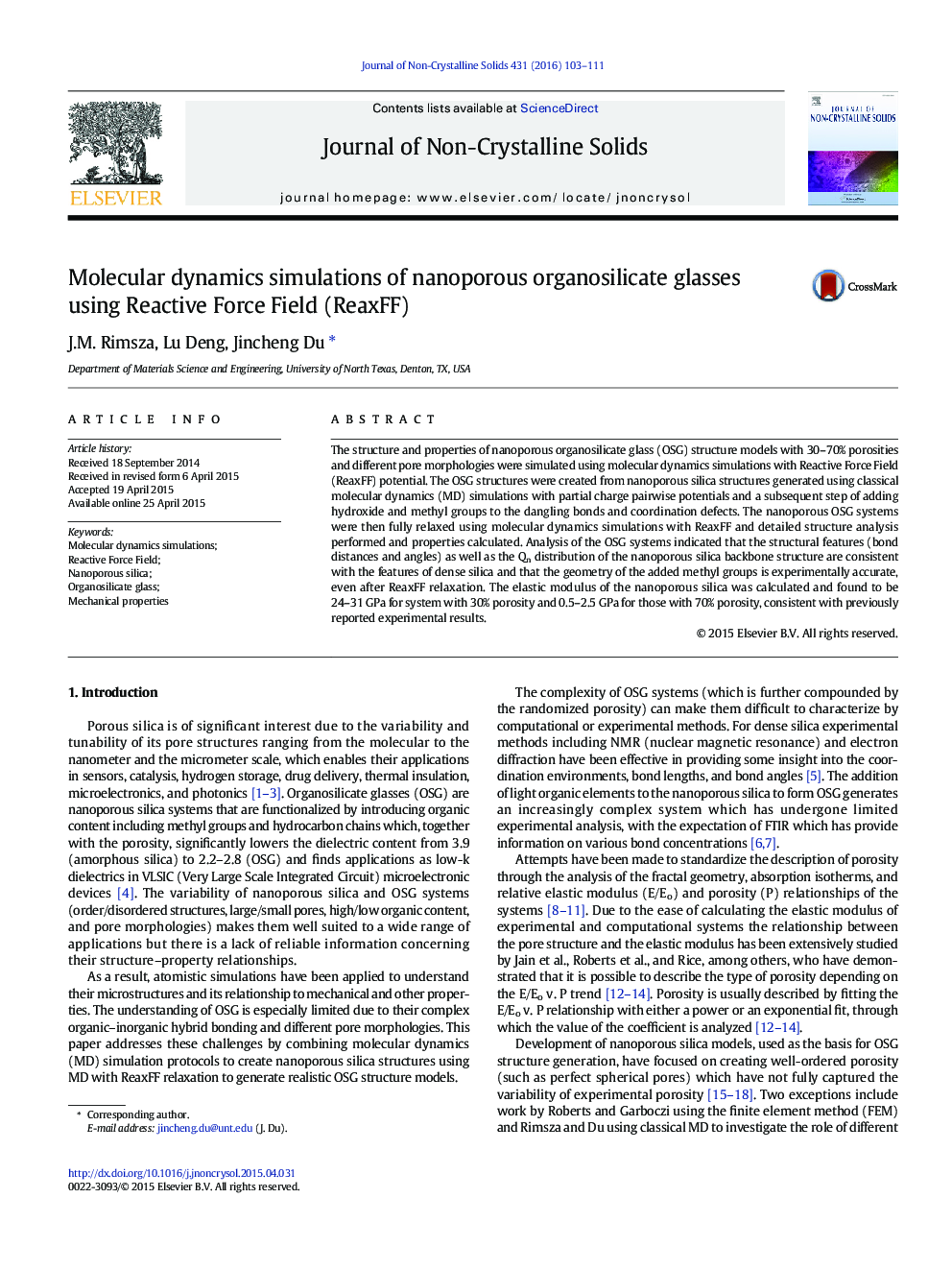| کد مقاله | کد نشریه | سال انتشار | مقاله انگلیسی | نسخه تمام متن |
|---|---|---|---|---|
| 1480502 | 1510413 | 2016 | 9 صفحه PDF | دانلود رایگان |

• MD simulations of organic/inorganic hybrid organosilicate glasses
• Reactive Force Field (ReaxFF) used to treat complex bonding
• Wide range of porosities introduced in OSG structures
• Detailed structure and property as a function of porosity of OSG
The structure and properties of nanoporous organosilicate glass (OSG) structure models with 30–70% porosities and different pore morphologies were simulated using molecular dynamics simulations with Reactive Force Field (ReaxFF) potential. The OSG structures were created from nanoporous silica structures generated using classical molecular dynamics (MD) simulations with partial charge pairwise potentials and a subsequent step of adding hydroxide and methyl groups to the dangling bonds and coordination defects. The nanoporous OSG systems were then fully relaxed using molecular dynamics simulations with ReaxFF and detailed structure analysis performed and properties calculated. Analysis of the OSG systems indicated that the structural features (bond distances and angles) as well as the Qn distribution of the nanoporous silica backbone structure are consistent with the features of dense silica and that the geometry of the added methyl groups is experimentally accurate, even after ReaxFF relaxation. The elastic modulus of the nanoporous silica was calculated and found to be 24–31 GPa for system with 30% porosity and 0.5–2.5 GPa for those with 70% porosity, consistent with previously reported experimental results.
Journal: Journal of Non-Crystalline Solids - Volume 431, 1 January 2016, Pages 103–111